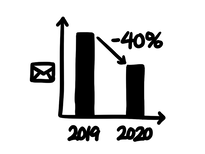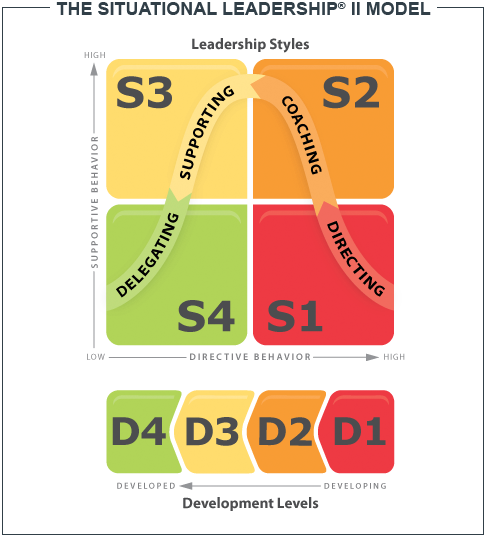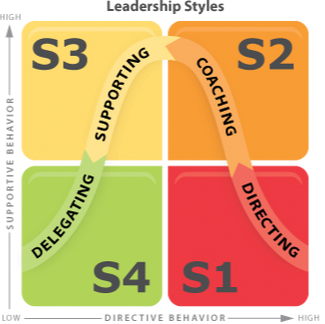|
I did not get the chance to write or draw much this month because of the gong show that is the start of the academic term (in the times of COVID-19 - a very different year for everyone involved). But this post is not about disruptions. Today is a day where I celebrate the accomplishments in my work in user experience design over the past year. My title does not have the term "User Experience Designer" in it but it turns out that the need for good design creeps up in various places. When I first started my role as a program advisor/administrator in university, I was flooded with inquiries from students in the program regarding degree requirements and course registration. It is understandable since the program has complex degree requirements (there are five degrees offered through two Faculties / four Departments so the requirements for each degree are unique, and there are many requirements to fulfill), but I was forced to think about how to improve my students' degree navigation experience: if everyone is asking me the same question, something must be unclear... It dawned on me that the questions kept coming to me because the information was not easily accessible. So I decided to make the information more accessible by doing two things:
Over the past year, the number of emails arriving in my inbox that have to do with degree requirements and course selection decreased by 40% (that's... pretty darn close to HALF). An added bonus: a larger proportion of the questions I receive tend to be the questions that need to be directed to me (i.e. the best kinds of questions). Although there are more things I can do to further improve the degree navigation experience for students, at this moment however, I think I'll bask in this favorable outcome.
0 Comments
You may have heard of the term "scope creep" in management: "Scope creep (also called requirement creep, or kitchen sink syndrome) in project management refers to changes, continuous or uncontrolled growth in a project’s scope, at any point after the project begins.[1] This can occur when the scope of a project is not properly defined, documented, or controlled." (From Wikipedia "Scope Creep"; [1] Lewis, James (2002). Fundamentals of Project Management (Second ed.). AMACOM. pp. 29, 63. ISBN 0-8144-7132-3.) This "creeping" can also happen in roles too. When a role "is not properly defined, documented, or controlled," role creep is bound to happen.
One example is the role of supervisor or manager. In some unfortunate cases, some supervisors role creep / micromanage due to the fear of "letting go" of the responsibilities that should be handled by their direct reports. Have you experienced your manager stepping on your toes all the time? The failure to delegate is something that I have struggled to tackle, and I have not found a solution for it (it probably needs to be dealt with on a case by case basis anyways). If you join an organization that is attempting to expand rapidly, your role will likely experience role creep. You'll probably be asked to wear say 3 hats at the time of hire, but when an organization is forced to "do more with less," one day you'll notice that you have 20 hats instead of the original 3. Some people find this enjoyable but others will find this exhausting. When the organization is large and stable, role creep may be the key to get you a raise or to get you promoted. If you voluntarily wear more hats and prove to the employer that you can take more things on (or new things on), that may open doors for future opportunities. Let me tell you my relationship with role creep: Whenever I wanted to wear a new hat and my supervisor said "no" to it because it was out of my "scope"... that hat was - consistently - the hat I ended up wearing in my next job. So if you're faced with a situation where you want to wear a hat but get shut down, it may still be worth doing research around that hat (even if you can't wear it immediately). You never know when you'll get a chance to wear it. It could be right around the corner... I failed to write for the last few Saturdays because I had underestimated how much effort it takes to adjust to a new job (^__^;) Now that it has been over 1 month since I started, I can say that I have mostly adjusted.
One of the things I've been (re-)adjusting to is the speed in which things happen, and I am astounded by how different the pace of life is in an academic setting vs. a small not-for-profit-scaling-up setting. In academia (especially in large institutions), things happen very slowly - some things happen over the course of weeks, other things take years. When I used to work in academia (2 jobs ago, as someone who had been running and managing visual analytics workshops) I found this process painful, but there were some things about that slowness that I now appreciate being back in academia:
(Before I go into the topic of micromanagement, I will clarify that when I say "micromanagement" I'm not referring to the S1 or "Directing" leadership style. I'm referring to the S0 or "Controlling" style.)
Over the years I have learned to get skeptical when I hear people say something along the lines of "I hate micromanagement so I don't do it" because chances are:
I openly admit that I have micromanaged before. This stemmed from a hiring mistake that I had made back when I was managing the vision science lab in university. I was responsible for bringing some directed studies students on board to help me with my project. I brought in two students. One was the right fit for the lab, and the other wasn't. The lab I worked in pretty much "ran itself" by motivated self-starters who are genuinely curious and eager to learn about how visual perception works. One of the students I brought in had said he was interested in vision science but I failed to see the truth: he really wasn't that interested. (The other student I brought in was beaming with interest. This was when I learned how important body language was in the context of interviews.) So for the next 3 months, I had two very different management experiences. For the genuinely interested student, it was like putting a rock on a hill and it just rolls on its own; stuff gets done! For the other student it was the opposite - it was like pushing a rock uphill, or pushing a really heavy object on a surface that has a lot of friction. The moment I stop pushing, everything stops. So I kept intervening. It wasn't a good experience for me, and I'm sure it wasn't a good experience for that student either. To me, micromanagement was a symptom of being bad at hiring. So now when I hear someone go "I hate micromanagement, it is the worst!" it gets me thinking - were you micromanaged? Were you micromanaging? Did it feel like you had to? Was it a result of a hiring mistake? How did it happen? Feel free to share micromanagement experiences in the comments (if you feel comfortable enough that is). "You either have to be part of the solution, or you're going to be part of the problem." I'm running into this phrase lately in the business context (which I will mention that it's used out of its original context - from the Googling that I did, I found that it was originally spoken by Eldridge Cleaver, an American writer and political activist: "There is no more neutrality in the world. You either have to be part of the solution, or you’re going to be part of the problem"). At first I was like "wow yeah totally" but it is starting to bother me. I realized that this is potentially a dangerous way of thinking because it oversimplifies things that shouldn’t be.
Here’s an example: Meet Adrian. He likes to plan everything way in advance because he gets anxious when the deadline is even remotely close. Meet Breanne. She thrives and performs better under pressure, so she prefers to start things when they’re closer to the deadline. Meet the team. Most of the team members think like Adrian. Breanne is the oddball in the team. Breanne is tasked with running a large company event, which involves doing a lot of arrangements with different venues and vendors. Breanne thinks that it’s ok to start planning 2 weeks before the event; that’s more than enough time. But the rest of the team doesn’t. They’re getting anxious because nothing has gotten off the ground a month before the event. So the team’s eyes naturally drift towards Adrian, who gives into the pressure and starts planning. Here’s the question: is Adrian part of the solution or the problem? Which solution? Which problem? It depends on what we’re talking about. Breanne’s thought that planning 2 weeks ahead may have been too short. Adrian may have increased the odds that the event will run well. But what should’ve been Breanne’s task is now on Adrian’s plate. Breanne is bored while Adrian is overwhelmed. What do we prioritize? Short-term success of the event or the long-term health of the team? What risks are the team willing to take? Were the tasks not assigned correctly in the first place? What role would Breanne thrive best in? I don’t have answers; only more questions. But I think these are questions that managers should be thinking about – not only whether someone is part of the solution or the problem. The world isn’t as binary as we may want to think it is. In the past 7 years I have seen countless cases on delegation done wrong - to be more exact, delegation done in the wrong context. What do I mean by context? Have a look at the following diagram (the Situational Leadership II Model is developed by the Ken Blanchard Companies): Allow me to briefly explain what this model is about. Let me start with the D's on the bottom. D stands for development - it's the levels of confidence and competence of the learner. I'm blanking out of the exact names of each level since it has been a while since I last read the book, but here are the nuances:
"S-Zero" and "S-WHAT?"
So I part with these questions (that I don't have the answers to... I'm still learning. I need your intel.):
Earlier this year, I sung the Ein deutsches Requiem by Brahms. I invite you to take a moment to listen to one of my favorite movements from that piece: My favorite moment in this piece is from 2:42 where the trombones start to pick up all the way to the triumphant "Hölle, wo ist dein Sieg?" ("Hell, where is thy victory?") at 5:41. At this time, it transitions to the next section with the altos starting the fugue with a warm and bold "Herr".
I'm an alto so I was one of the singers who started off with "Herr". During rehearsals, I remember being somewhat sheepish to start it. But during one rehearsal, my choral director made us sing that note by ourselves. Meaning, my director pointed at the first alto in the front row, then the second, then the third... and we sung that note one by one. Everyone else is silent. Your voice is heard by over 100 (!) other singers - quite vulnerable and humbling! After a good chunk of us sung that note one by one, the director told us to sing exactly the way we did when we sung one by one, except to sing at the same time. And that was when music happened. I was thinking about that magical moment when the sound coming out of the alto section was not just a mere note - it was music. My working hypothesis is that since all of us were held accountable for that note, one by one, and as a result we each took ownership of that note. Each one of us made a conscious choice to own it. At that point I realized that this phenomenon doesn't occur only in choirs or orchestras. It occurs in any organization where people accomplish something together - when each individual chooses to takes ownership of their role, that's when the magic happens. That rehearsal - that "Herr" - proved to be an important lesson for my management career but also for my life in general. More on that next week.
I also write with the intent to reach out to individuals who have suffocated their own inner flame by internalizing problems caused by bad management:
“Maybe I was just being too much of an idealist.” “Maybe I just haven’t grown up.” “I need to just manage my stress better.” I want to be the warmth of reassurance: It’s not that you’re just an idealist. It’s not that you haven’t grown up. It’s not that you just don’t know how to manage your stress better. It’s real. You’re real. I want to be the spark that rekindles your desire to do what you believe is right, and the updraft that raises your confidence to take the first step forward. A few years ago, I spoke with someone who has decades of experience in organizational change management with the hopes that I can do something to change my organization. I had a few conversations, but nothing useful came out of them. In fact, I came out of those conversations feeling not only useless but worthless too.
I was faced with the cold reality that change management consulting is, in fact, a business. Change management consultants need revenue to make a living, so they need to choose their clients. Their clients are executives in the C-suite who have the authority to pay the consultants. So they cater their services to where the money is. As a result, the suggestions I got from the change management consultant were not applicable for me at all; they were for the C-suite executives. Building a business plan. Speaking to the board of directors. Budget. Finances. All I could say was "I don't know," or "I'm not in the position to do that." It felt like I shouldn't be a part of the change management conversation to begin with because I don't have any power. Are there people who are feeling useless like the way I did a few years ago? If yes, then how can I help them? What can I do to find them? How can I reach out? One of my answers to these questions (although not a complete answer by any means) was to write - to share my experiences and to not stay silent about the matters I care about, get angry about, feel guilty about. Someone may stumble across what I write and realize that they're not alone. Could it be you? This is an answer post to my previous piece on how someone's undesirable behavior could've been seen as a symptom of a larger-scale problem but it was dismissed as only that person's problem. I see this as an opportunity cost for the organization. The organization could have:
To properly address the cause of undesirable behavior in individuals and to get honest feedback about the organization, it is of utmost importance to make the person feel safe and relaxed (the person is probably on the verge of crumbling with anxiety). In doing so, there are a few things to take into consideration when soliciting authentic feedback:
I'm sure I'm coming back to the "what do you do instead of blaming someone?" theme over and over again in future posts because blaming in the workplace happens way too often and to me, it ends up harming the organization as a whole as opposed to protecting it. |
AuthorI'm Candice and I doodle with the intensity of the doomguy. Categories
All
Archives
March 2021
|











